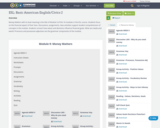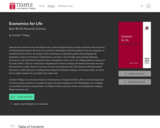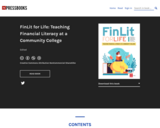
CashOnHand - Glossary - Billy - Spanish
- Subject:
- Business and Communication
- Education
- English Language Arts
- Finance
- Speaking and Listening
- Material Type:
- Lesson
- Date Added:
- 07/19/2021

CashOnHand - Glossary - Billy - Spanish

CashOnHand - Housing - Shawn - English

CashOnHand - Housing - Shawn - Spanish

Financial literacy - CashOnHand - Income - Alina - ASL/English

Financial literacy - CashOnHand - Income - Alina - ASL/Spanish

CashOnHand - Independent Living Skills - Leilani - English

CashOnHand - Independent Living Skills - Leilani - Spanish

Financial literacy - CashOnHand - Needs vs Wants - Don - ASL/English

Financial literacy - CashOnHand - Needs vs Wants - Don - ASL/Spanish

Financial literacy - CashOnHand - Ready to Work - Toni - ASL/English

Financial literacy - CashOnHand - Ready to Work - Toni - ASL/Spanish

CashOnHand - Summary - Seth - English

CashOnHand - Summary - Seth - Spanish

CashOnHand - Transportation - Brandon - English

CashOnHand - Transportation - Brandon - Spanish

This lesson is to help students analyze aspects and features of credit cards to know how to determine which would be best for various situations.

Money Matters with its dual meaning is the title of Module 9 of the 16 modules in the ESL course. Students focus on the financial aspect of their lives. Discussions, assignments, class activities support student comprehension of concepts in the module. Students connect how values and decisions influence financial goals. What are needs and wants? Pronouns and possessive adjectives are the grammar components of the module.

America has evolved into an ownership society. Home-buying decisions, resource allocation, debt exposure, and financial planning for the future are now left to individuals, many of whom may lack the financial understanding to evaluate and make sound decisions. Economics, with its insistence on quantifying ideas and putting specific quantitative values on all manner of phenomena, can help sort through the questions. Economics for Life: Real-World Financial Literacy is designed to help soon-to-be college graduates start their "real lives" with a better understanding of how to analyze the financial decisions that they will soon have to make. Written in an easy-to-read, conversational style, this textbook will help students learn how to make decisions on saving and investing for retirement, buying a car, buying a home, as well as how to safely navigate the use of debit and credit cards.

This book gives tips and methods for teaching a community college financial literacy course. This information can be adapted and applied to high school courses as well.

The cost of college should never discourage anyone from going after a valuable degree. –Arne Duncan, former United States Secretary of EducationLEARNING OBJECTIVESBy the end of this section, you will be able to:Establish financial goalsIdentify strategies for creating and maintaining a budgetDescribe available options for paying for collegeDescribe the benefits and risks of creditDevelop financial literacy skills to prepare for your financial future